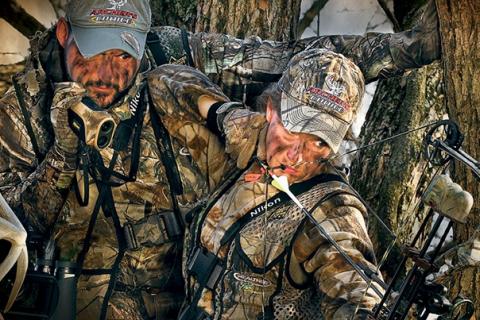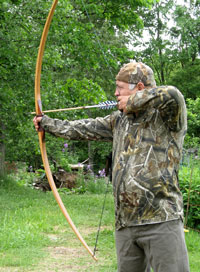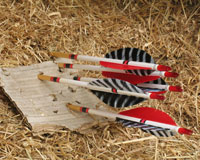

For many, bow hunting for deer is not just a passion, it's a way of life. If we're not trying to fill tags, we're reliving the glory days or remembering the mistakes that will forever haunt us. We read about it, investigate the latest gear, and make plans for the season to come.
That last part is especially important because how you prepare for next season has a direct impact on the memories you'll take away from it. With that in mind, here are a few things that every bowhunter should do well before the leaves turn color.
Tune Your Bow
Whether you use a compound, longbow, recurve or flatbow, the basic elements of bow tuning are identical.
The most essential ingredient is the right arrow. If you're not sure what that is, consult a manufacturer's shaft selection chart. First, however, you'll need to know your bow's draw weight, type of cams (if any), and your draw length. This information will yield a short list of arrows that will match your outfit.
Once you've selected from that list, adjust the bow's nocking point and arrow rest until you achieve optimum arrow flight. A quick search on the Internet will provide sound advice on how to do this. There are also books, videos and DVDs available that explain the process very well. It's well worth the effort. A tuned bow shoots arrows more accurately and with increased penetration — two essentials for the hunting archer.
Check Archery Accessories
Once your bow has been tuned, it's time to consider how all of its components work together. The idea is to evaluate each accessory to ensure that each is useful and quiet in the field.
Start by making sure that you have a reliable hunting sight.Your peep sight, if you use one, should have a large aperture, conducive to use in low light. Similarly, your sight pins should be highly luminous and fine — the bigger the pin, the harder it is to settle on a small spot on a distant animal. While you're at it, ask yourself how many pins you really need. In the northeastern hardwoods, where I hunt, I use two, one set at 20 and the other at 30 yards. This covers practical hunting distances while leaving an uncluttered sight picture. Whatever your preference, the off-season is the time to decide what works for you.
Also evaluate your stabilizer, silencers, quiver, release and grip to ensure that everything works effectively. Lastly, decide on a broadhead that shoots well from your bow, and, once satisfied, stick with it.
Practice, Practice, Practice
 |
| Yardage guessing exercises help hone your range estimation skills, which are invaluable when hunting. |
Every bowhunter has been offered this advice. Yet, few practice as much as we should. Personally, I'm a practice junkie.
Shoot with friends, family and alone. Sometimes I'm striving for better groups, which is an indication of a tuned bow and consistent form, but most times my shooting is less formal, at 3-D targets or rotted stumps I see while roving.
In these situations, I change my mental attitude. I pretend that the target before me is the buck I've been waiting for all year. I tell myself everything hinges upon this one arrow.
Concentration becomes key. So, as I draw, I try to maintain proper form, and aim at a target within the target. I'm striving for a perfect release.
Though most of my practice is within my maximum bowhunting range of 30 yards, range estimation skills are also critical. So, before each shot, I guess the yardage. Afterwards, I use a rangefinder or pace it off to find out what the range actually was. Additionally, I'm constantly guessing yardage whenever I go for a walk. It might seem trivial but these little exercises help hone your range estimation skill, which is invaluable when hunting.
As the season draws closer, I practice while wearing my hunting garb, and I start shooting from elevated platforms too. I'll also shoot from awkward positions, as if a deer circled behind me, for instance. And I always endeavor to move slowly and deliberately when coming to full draw, just as I try to do when hunting.
You probably practice differently. There are hundreds of innovative ways to do so. As long as you loose arrows regularly, try to simulate hunting conditions, and strive for perfection in each shot, you're doing a service to yourself and the deer you hunt this autumn.
- 3489 views

